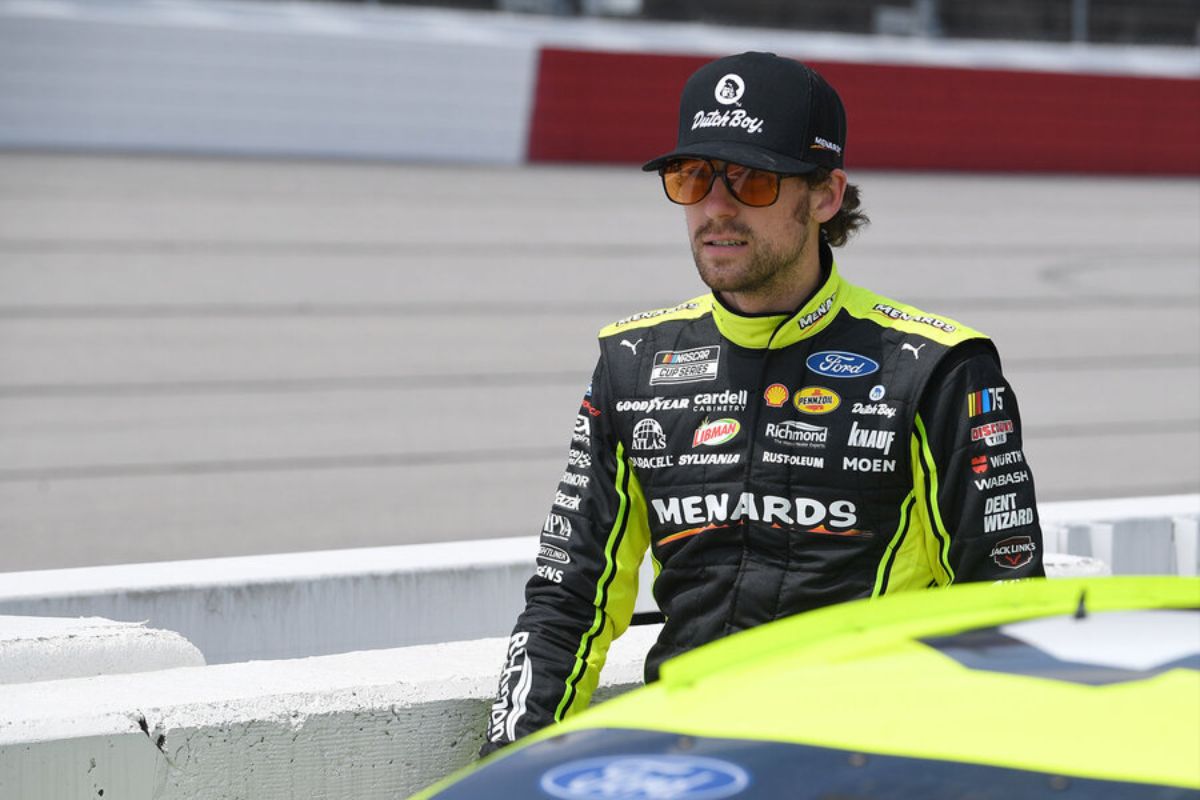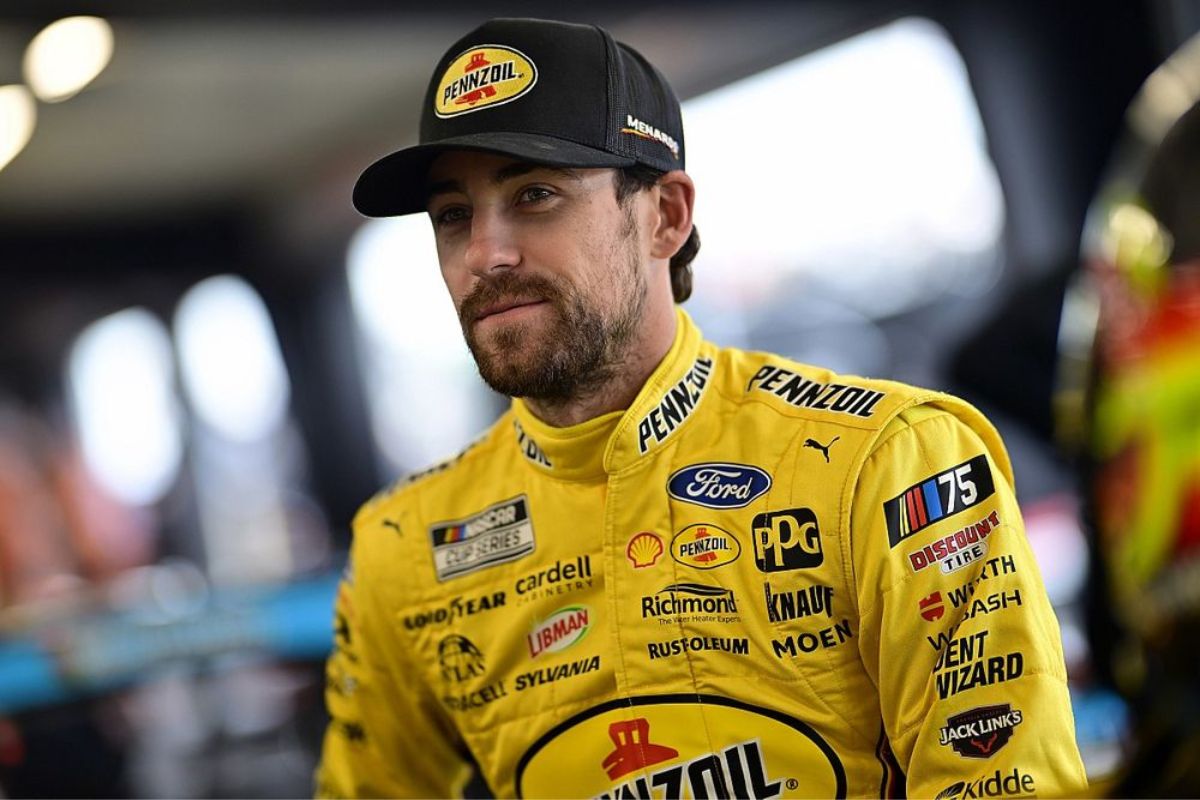Ryan Blaney’s Misfortune Boosts Hamlin: Ryan Blaney’s recent setback at Gateway, caused by an unexpected fuel miscalculation, markedly altered the race’s competitive landscape, providing a vital advantage for Denny Hamlin to maintain his leading position. This incident highlights the essential role of precise strategy and fuel management in motorsport, where even a minor error can shift the balance of power. As Hamlin capitalized on Blaney’s misfortune, it becomes apparent how split-second decisions and adaptability can make or break a race.
Key Highlights
- Ryan Blaney’s fuel miscalculation cost him the race, allowing Denny Hamlin to maintain his lead position.
- Blaney’s unexpected relegation significantly altered the dynamics of the race.
- Denny Hamlin capitalized on Blaney’s setback to secure his top spot in the race standings.
- Blaney’s error highlighted the critical importance of precise fuel management in motorsport.
Unexpected Outcomes at Gateway
At Gateway, the race took an unexpected turn when Ryan Blaney’s misfortune opened the door for Austin Cindric’s initial win in two years, while Denny Hamlin capitalized on the situation to maintain his top spot. Blaney, who had been poised for victory, encountered an unforeseen mishap that forced him to the back of the pack. This unexpected twist not only altered the race’s outcome but also reshaped the dynamics among the top contenders.
Austin Cindric seized the opportunity presented by Blaney’s setback with remarkable skill. His performance was a reflection of his readiness to capitalize on any advantage, securing his best victory in two years. This win highlights Cindric’s resilience and strategic intelligence, marking a significant milestone in his racing career.
Meanwhile, Denny Hamlin, ever the strategic thinker, used the unfolding events to his benefit. While Cindric celebrated his win, Hamlin’s consistency allowed him to maintain his lead in the standings. His ability to navigate the complexities of the race and make the most of others’ misfortunes showcases his tactical expertise and experience.
Blaney, finishing 24th and second to last, was certainly the most impacted by this turn of events. His unexpected relegation serves as a stark reminder of the unpredictable nature of the sport, where fortunes can change in a split second. This race at Gateway exemplifies how quickly the dynamics can shift, offering opportunities to some while presenting challenges to others.

Technical Failures Impacting Top Contenders
The race at Gateway not only highlighted unexpected outcomes but also emphasized the significant impact of technical failures on top contenders. Mechanical issues and fuel miscalculations played decisive roles, altering the trajectory of the World Wide Technology Raceway event. Such incidents highlight the unpredictable nature of motorsport, where even the most carefully prepared teams can fall victim to unforeseen technical challenges.
A prime example was the No. 20 car, which was forced to retire early due to mechanical issues. This setback for a leading contender dramatically reshaped the competition. Following this, Ryan Blaney seized the opportunity and took the lead, displaying his skill and strategic intelligence. However, as the race neared its end, Blaney encountered a critical fuel miscalculation. Running out of gas on the last lap, an occurrence that seems almost implausible given the extensive resources and data analysis at the team’s disposal, cost him what appeared to be a certain victory.
Blaney’s misfortune opened the door for Denny Hamlin and Austin Cindric, who capitalized on the opportunity to advance. This turn of events exemplifies how technical reliability is as important as driver skill in NASCAR. Teams invest heavily in technology and expertise to avoid such pitfalls, yet the race at Gateway served as a stark reminder that no amount of preparation can entirely mitigate the risk of technical failure.
Analysis from Denny Hamlin
Denny Hamlin’s analysis sheds light on the critical fuel miscalculation that plagued Ryan Blaney’s No. 12 car during the Gateway race. According to Hamlin, the primary issue stemmed from an erroneous assumption regarding the amount of fuel in Blaney’s tank during his last pit stop. Hamlin posits that Team Penske believed they had more fuel in reserve than was actually present, leading to an unexpected shortfall that ultimately compromised Blaney’s race.
Hamlin also highlighted a strategic choice made by the Penske team, noting that their cars frequently ran in the third gear. This decision, while beneficial for achieving higher speeds and better runs, comes with a significant trade-off: increased fuel consumption. Operating at higher RPMs inherently demands more fuel, and Hamlin suggests that this exacerbated the miscalculation. The combination of running at higher RPMs and an inaccurate fuel gauge led to a situation where Blaney’s team was caught off guard by the fuel depletion.
“My thinking is that the miscalculation came from what was in the tank. They thought they had a certain amount in the tank when they pitted, and they did not. They had less than that.” – Hamlin
Hamlin’s insight brings to light the delicate balance teams must maintain between performance and resource management. The miscalculation was not merely a matter of numbers but also of strategic execution under high-pressure conditions. Blaney’s team, it appears, failed to properly account for the increased fuel burn resultant from their gear strategy, leading to their eventual downfall.

Impact on Strategy and Fuel Management
Balancing performance with fuel efficiency, particularly within race conditions, is a critical aspect of strategic management that can make or break a team’s success. In the recent race, this balance was prominently highlighted with Ryan Blaney’s unfortunate exit due to fuel depletion, which inadvertently provided Denny Hamlin’s team with a timely reminder of the importance of astute fuel management.
Blaney’s situation emphasized the imperative nature of real-time fuel strategy. As his car began to sputter, an immediate instruction to ‘flip the fuel switch’ was issued—a tactic designed to tap into the reserve fuel. However, as Blaney elucidated, this reserve is only sufficient for approximately one lap, emphasizing the razor-thin margins within which teams operate. The intricacies of fuel management in racing are such that each driver starts with a different fuel load, tailored to their specific race strategies and anticipated needs.
“The flip switch is only good for a lap and so or three-quarters of a lap. I’m not sure but say it started sputtering entering turn three you know flips the switch by the time he enters one he’s back. He’s lost his reserve tank as well.” – Hamlin
Hamlin’s team, already on alert due to Blaney’s predicament, promptly reviewed their own fuel strategy, ensuring they optimized efficiency without compromising performance. This incident serves as a case study in the necessity for continuous monitoring and swift adjustments in strategy, highlighting the dynamic and often unpredictable nature of racing.
How did Blaney run out of gas? DH has a theory. ⛽
Listen to the latest episode of #ActionsDetrmeintal with @dennyhamlin now! pic.twitter.com/f0Vb2UFqVG
— Dirty Mo Media (@DirtyMoMedia) June 3, 2024
The consequences of running out of fuel extend beyond the immediate race. It can trigger a cascade of delays, necessitating unscheduled pit stops that disrupt planned strategies and cost valuable time. In this situation, Hamlin’s ability to maintain the top spot illustrates the critical advantage gained through meticulous fuel management and strategic foresight.
Blaney’s Missed Opportunity and Cindric’s Win
Despite Ryan Blaney’s high hopes and strategic positioning, his untimely fuel depletion allowed his teammate Austin Cindric to seize victory at World Wide Technology Race. The race dynamics were intense as Blaney, trailing Christopher Bell, saw an opportunity when Bell suffered a mechanical failure. With Bell out of the running, Blaney ascended to the lead, looking poised for a win. However, fate intervened as Blaney’s car ran out of fuel, an unforeseen issue that mirrored Bell’s misfortune.
“They were great, they did a good job. Happy for that team. I mean obviously bummed for us. The nut shots keep coming here this past month but hopefully… Straighten itself out, just proud of the effort, have to figure out what happened there. We thought we had more fuel than we did, it’s not like we left it short on purpose…so we have to figure it out, dig into that.” – Blaney
Blaney’s disappointment was palpable post-race. He acknowledged the effort put forth by his team but was visibly distraught over the missed chance. Blaney commented, “We thought we had more fuel than we did, it’s not like we left it short on purpose…so we have to figure it out, dig into that.” His sentiments reflected the frustration of coming so close to victory, only to be thwarted by an avoidable error.
Conversely, Austin Cindric capitalized on the situation, securing a significant win. Cindric expressed mixed emotions, stating, “Heartbroken for those guys but this is huge for me.” His victory highlighted the unpredictable nature of motorsport, where one driver’s misfortune can swiftly become another’s success. The outcome also showcased the competitive spirit within the team, demonstrating their capability to place two cars at the top.
“This weekend was a great weekend for everybody involved but yeah to have two cars in the fight, an eventual 1-2 there. Heartbroken for those guys but this is huge for me.” – Cindric

News in Brief: Ryan Blaney’s Misfortune Boosts Hamlin
The recent race at Gateway highlighted the critical influence of technical challenges and fuel management on competitive standings. Ryan Blaney’s fuel miscalculations notably altered the race dynamics, enabling Denny Hamlin to maintain his top position. This incident emphasizes the inherent unpredictability of motorsport and the necessity for strategic adaptability.
Blaney’s misfortune, contrast with Austin Cindric’s victory, shows the fine margins that can dictate outcomes in racing environments.
Our Reader’s Queries
Q: How many DNFs does Denny Hamlin have?
A: Denny Hamlin Statistics and Results
| Year | Entrant | DNF |
|---|---|---|
| 2022 | Joe Gibbs Racing | 5 |
| 2021 | Joe Gibbs Racing | 0 |
| 2020 | Joe Gibbs Racing | 1 |
| 2019 | Joe Gibbs Racing | 1 |
Also Read: Ryan Blaney’s Gateway Struggles Highlight Penske’s Tough Season
